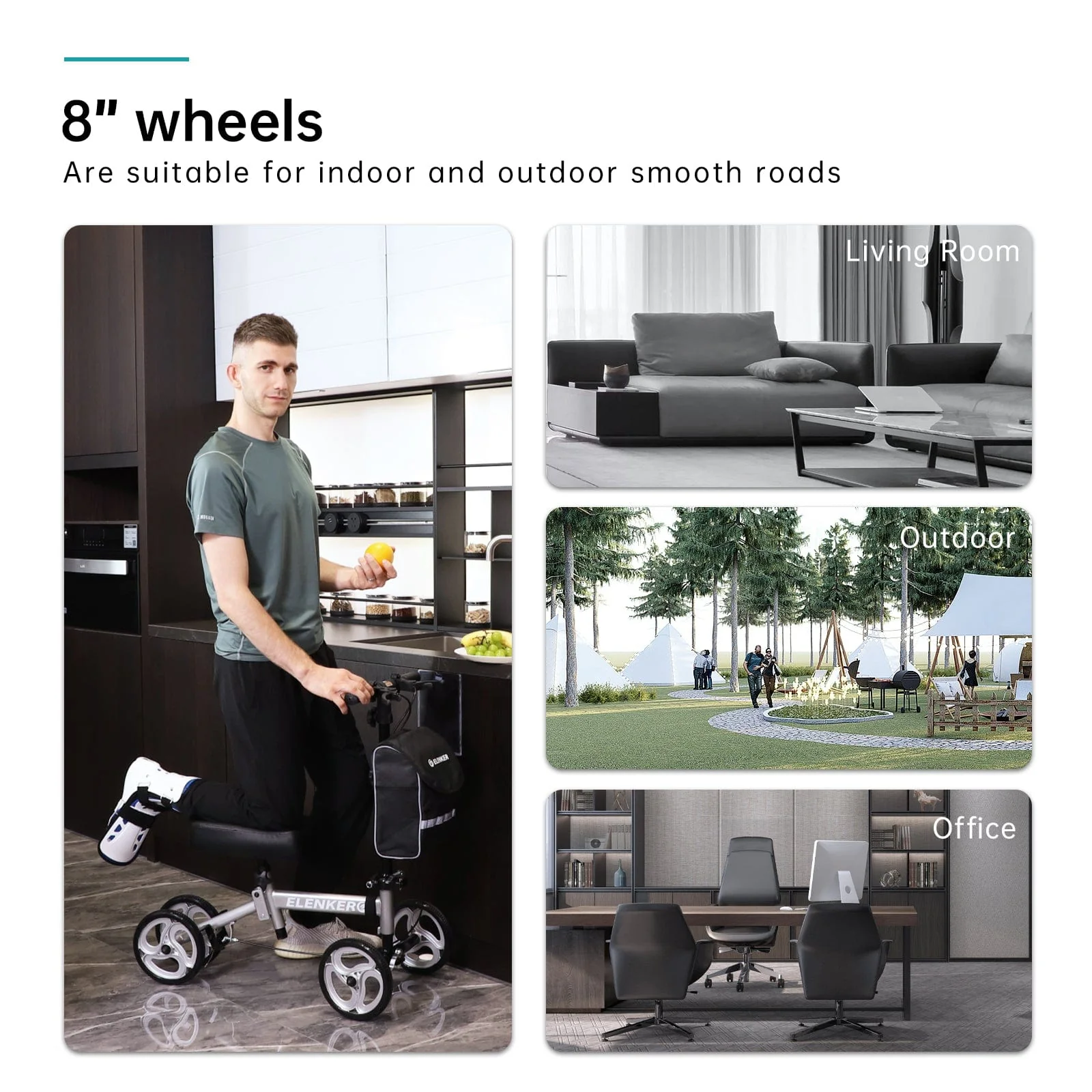Alright, so you’ve broken your foot. Whether it was a misstep, a sports injury, or just plain bad luck, now you’re stuck figuring out how to get around without putting any weight on it. The first thing most people think of? Crutches. But let’s be honest—crutches aren’t exactly fun. They’re awkward, they can hurt your arms, and going up or down stairs with them feels like a balancing act at the circus.
So, what about a scooter for broken foot recovery instead? If you’ve seen someone gliding around on a little wheeled thing with one leg propped up, that’s probably a knee scooter (aka knee walker, leg scooter for broken foot, or medical scooter for broken foot—yeah, it’s got a bunch of names). Let’s break down whether this nifty little device is actually better than crutches.
Crutches: The Classic (but Not Always Comfortable) Option
Crutches have been around forever, and for good reason—they’re cheap, easy to find, and don’t require much storage space. But they also come with some drawbacks:
- They require a lot of upper body strength.
- Your hands are always occupied, so good luck carrying coffee.
- Long-term use can cause sore armpits and wrists.
- They can be a real pain on uneven surfaces or stairs.
If you’re only using crutches for a day or two, they might be fine. But for longer-term recovery, especially if you’re supposed to stay off that foot for weeks, they can get pretty annoying fast.
The Rise of the Knee Scooter
Enter the knee scooter for broken foot—a padded platform with wheels that lets you rest your injured leg while using your good leg to push yourself around. If you’ve never used one, imagine a scooter for grown-ups, but with a cushion for your knee. It’s simple, smooth, and most importantly, easier on the body.
Here’s why a leg scooter for broken foot is winning people over:
1. Comfort is a Big Deal
The biggest perk of a medical scooter for broken foot? Comfort. No sore underarms or tired arms from lugging around crutches all day. Your injured leg just rests while you roll, and your good leg gets to do most of the work without straining the rest of your body.
2. You’re Way More Mobile
With a knee walker, you can actually get around faster—especially indoors or on flat ground. Grocery store trips, getting from one room to another, or even going to work is way more manageable. And because your hands aren’t constantly gripping crutches, you can carry a bag, coffee mug, or even walk the dog if you’re careful.
3. Better for Long-Term Use
If your recovery time is more than a week or two, trust me—your arms and shoulders will thank you for choosing a scooter. Plus, you’re way less likely to fall or tip over, which is always a win.
But It’s Not All Smooth Sailing
Of course, no mobility aid is perfect. Here are a few downsides of a knee scooter you should keep in mind:
- Stairs are still tricky—you’ll need to lift the scooter or use crutches when going up or down.
- They’re not ideal for rough outdoor terrain like gravel or uneven sidewalks.
- You’ll need a bit of space, so if your home has narrow hallways, it could be a squeeze.
- You can’t use them if your knee or thigh is also injured.
Still, for most people with just a foot or ankle issue, these aren’t deal-breakers.
Crutches vs. Knee Scooter: Side-by-Side
| Feature | Crutches | Knee Scooter for Broken Foot |
|---|---|---|
| Comfort | Can cause arm/armpit pain | Padded, easier on the body |
| Mobility Speed | Slower, tiring | Faster, smoother |
| Hands-Free Use | No | Yes (to an extent) |
| Indoor Use | Okay, can be clunky | Great for smooth floors |
| Outdoor Use | Better for stairs or rough paths | Better on flat, even surfaces |
| Price | Usually cheaper | A bit more expensive, but worth it |
So, Is a Scooter the Better Choice?
If you’re asking us? Yeah, for most people dealing with a foot injury, a knee scooter for broken foot is a total lifesaver. It’s way easier on your arms, gives you more freedom, and just makes life a little more normal during recovery. Of course, crutches still have their place—especially for super tight spaces or quick trips—but if comfort, convenience, and mobility matter, a knee walker is tough to beat.
Quick Tips Before You Get One
- Check with your doctor first to make sure you’re a good fit for a knee scooter.
- Make sure the height is adjustable so it fits your leg properly.
- Look for one with sturdy wheels if you’ll be using it outside.
- If you travel a lot, get a foldable model that’s easy to throw in the car.
Recovering from a foot injury is already a hassle—don’t make it harder on yourself with tools that just don’t work for your lifestyle. If crutches are driving you nuts, give a scooter for broken foot a try. Whether you call it a leg scooter, knee walker, or knee scooter, it might just make your recovery a whole lot smoother (and a lot less frustrating).


